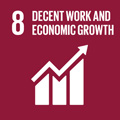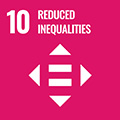- Docente: Rita Chiesa
- Credits: 4
- SSD: M-PSI/04
- Language: English
- Teaching Mode: Traditional lectures
- Campus: Cesena
- Corso: Second cycle degree programme (LM) in Work, Organizational and Personnel Psychology (cod. 5967)
Learning outcomes
The development of professional competencies is in large part related to students’ ability to integrate research and practice. By the end of the course, students will be able to: - diagnose the research dimensions of some problems posed by persons, groups and or¬ganizations in different work settings; - integrate theoretical and methodological research results all along the diagnosis and the solution of practical problems - develop a constant interest for the progress of research in the field of WOP psychology. As a conclusion of the activity the student has to write his/her Integration Report.
Course contents
This course is intended only for students from the Erasmus Mundus WOP-P Master. Because of its direct link to the curricular stage, exchange students can't be admitted – we thank you for your understanding.
The integration report module will have to demonstrate the effort of the student to integrate both scientific/research methods and knowledge, and professional practices. The content of the report should start from the experience made during the internship.
Under the supervision of the teacher, students should:
- Find a practical issue (e.g., a specific issue related to recruitment, hiring, training, performance evaluation, career development, retirement transition, motivation, well-being, etc.). It may arise from direct observation, and/or dialogue with the industry and/or university advisors of the internship. In the first part of the report frame/describe the issue. The description should be specific and concrete (i.e., the issue should be properly contextualized).
- Place the practical issue in relation with scientific and professional literature (i.e., relate it to the body of knowledge acquired during the Master studies). In the second part of the report use a bottom-up approach and explain/interpret the issue using the WOP literature (e.g., theories/research).
- Analyze in a critical way the issue. In the third part of the report conduct a SWOT analysis (strengths, weaknesses, opportunities, and threats), and frame/design possible solutions and suggestions (e.g., interventions) for the specific context related to the issue analyzed.
Readings/Bibliography
Marilyn M. Helms, Judy Nixon, (2010) "Exploring SWOT analysis – where are we now?: A review of academic research from the last decade", Journal of Strategy and Management, Vol. 3 Issue: 3, pp.215-251, https://doi.org/10.1108/17554251011064837
Teaching methods
One-to-one support and feedbacks
Assessment methods
The report consists in a individual paper of 3500-4500 characters.
The evaluation of the paper will be based on:
- Clarity of the description of the practical issue;
- Adequate and coherent connections with the scientific and professional literature;
- Quality of the SWOT analysis of the practical issue;
- Fitness of solutions and suggestions (e.g., interventions) resulting from the critical analysis of the practical issue;
- Compliance with APA style.
Teaching tools
Additional materials will be uploaded on virtuale.unibo.it platform
Office hours
See the website of Rita Chiesa
SDGs



This teaching activity contributes to the achievement of the Sustainable Development Goals of the UN 2030 Agenda.
